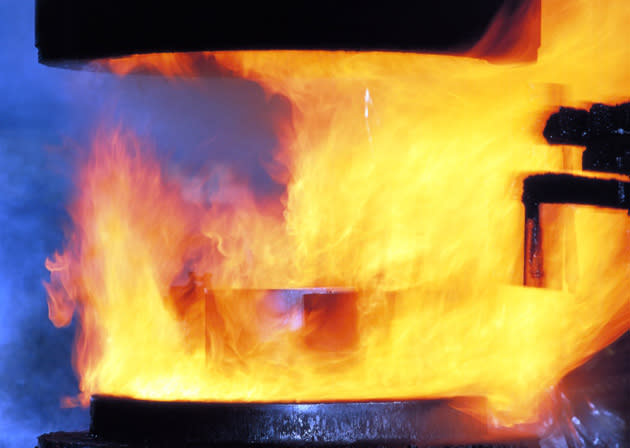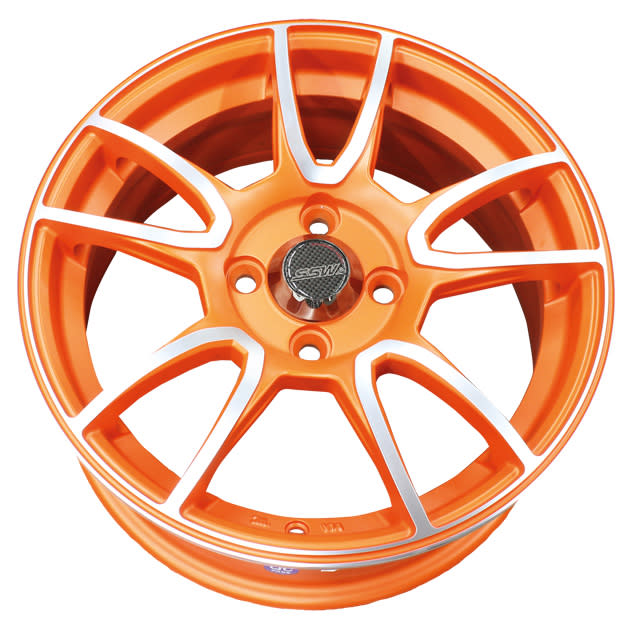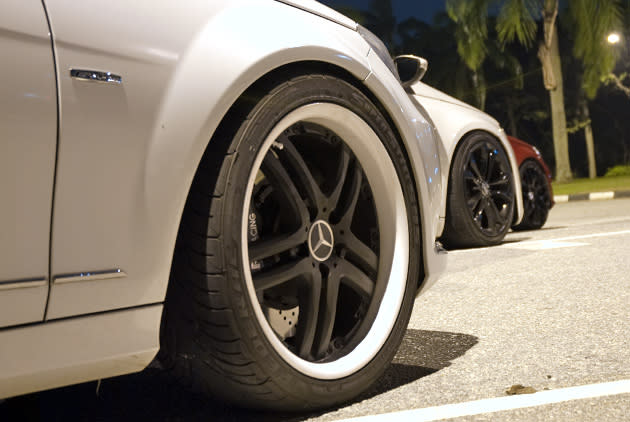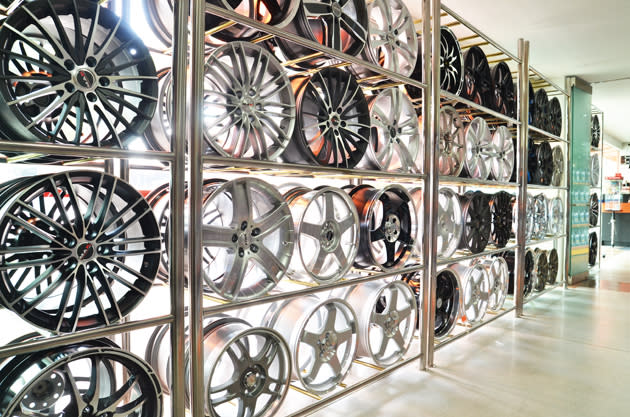Wheels: The Road To Perfection
Nothing can change the looks of your car better than a new set of wheels! Aside from making the car look better and a lot sportier, the wheels also contribute to ride quality and handling abilities. How do you find the right wheels and be sure that they will fit on your car?
In buying replacement wheels for your car, there are important things you need to know, especially if you are new to driving. You can't just choose any kind of wheel in lieu of the original wheel of your car. There are different wheel specifications for every kind of vehicle and car model since suspension design varies from one vehicle to another.
Forged or cast?
A good majority of wheels are made with the casting process. A quick and inexpensive way to make wheels, molten aluminium is placed in a mold and allowed to cool. On the other hand, a forged wheel begins life as a solid piece of metal, which is then subjected to heat and intense pressure, which compresses the metal into the desired shape, while the design is subsequently milled out.
While cast wheels are cheaper to manufacture, they are more porous – they lack the material density of forged wheels. To counter this, cast wheels are usually heaver than forged wheels because manufacturers factor in larger tolerances, adding more material in order to obtain the optimum structural strength.
Hub or lug centric?
Most stock wheels are hub-centric, meaning that the centre bore of the wheel (or simply put, the hole that the centre caps cover) is sized to fit perfectly onto the axle. The lugnuts hold the wheel firmly to the hub, while the part of the wheel that slips over the hub carries the weight of the car.
Most aftermarket wheels are therefore made with larger centre bores to ensure that they will fit on a wider range of cars. This necessitates the use of spacers to keep a firm contact. However, some may think that there is no use for hub spacers, as the wheel can also be centred by keeping the lugs tight.
Without a secure hub connection, any impact will apply vertical force to the lug studs which can cause the lug studs to bend, or in the worst possible scenario, break off completely.
ET... phone home?
Flip a wheel and you'll most likely to find “ET__” stamped on the back. ET stands for “Einpresstiefe”, German for “insert”. This is very important, because this also affects the scrub radius if the car.
A little bit of something is always good and if there's too much... you know the rules. A small deviation from the vehicle manufacturer specification won't hurt, but going for wilder offsets will cause the wheels to rub against the suspension bodywork. Most stock offsets are geared towards a slightly positive scrub radius, necessary to provide better steering feedback and self-centering abilities. At a perfectly zero scrub radius, steering would feel numb.
However, excessive scrub radius (if you want the “hellaflush” look) can amplify torque as well as bump steer and make the car feel more twitchy at higher speeds. Just one of the reasons why we would recommend a mild change in offsets unless you absolutely know what you want to achieve.
Would you like to upsize?
Most discerning drivers will go for bigger wheels . This process is called "upsizing" and is most often done for looks and performance benefits. In order to keep the same overall diameter, when you gain an inch of wheel size, you must lose an inch in the height of the tire, and vice versa. While we could describe the mathematical formula in detail, are easier ways to get the dimensions right. Websites and apps are just some of the easy tools which you can use, just input your original tyre and wheel sizes and let them take the guesswork out. Generally, it is recommended to keep the overall diameter as close as possible to the original.
What about the rest of the brochure specs? Are they important?
If you are planning to install beefier big brake kits, pay attention to the X-factor (no, not that TV show). X-factor refers to brake caliper clearance. The bigger the X-factor, the more space you will have behind the spokes.
You pay attention to nuts? What? Are you nuts?
Make sure you use the correct lug nuts! There are three main types, conical/tapered, ball/radius and flat. If you are using the original nuts / bolts, make sure they have 60° seats. In some cases, factory hardware are radius seat, which looks similar but cannot be used.
While this is common practice, try not to use air or impact wrenches to tighten nuts or bolts, they can cause excessive stress to the lug threads by over tightening. The best method is to hand-tighten all hardware to avoid cross threading in a criss-cross pattern to ensure uniform pressure and proper wheel alignment. Use a torque wrench to ensure that all the nuts are evenly torqued. Also, don't forget to re-torque before you do some aggressive driving! Loosing a wheel is the last thing you want at high speed!






